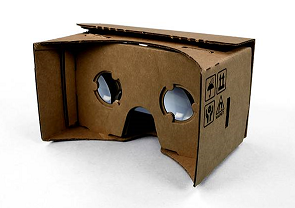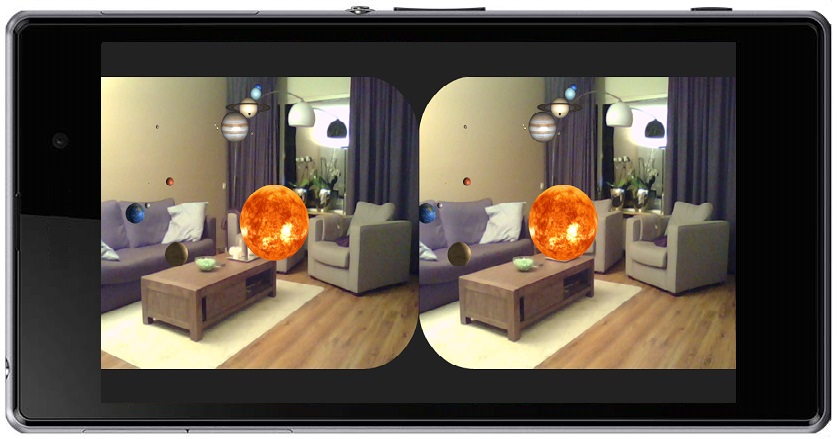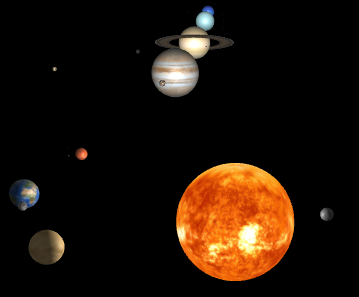Augmented Reality Solar System for Google Cardboard
How to use Solar System for Cardboard:
Next, open the browser on your phone and go to this page and click the button below:
Tim Samshuijzen
2014
Note:
The relative sizes of the planets and moons sizes are incorrect (some are exaggeratedly huge), the orbit and rotation times are incorrect, and so are the orbital distances of the moons. This is purposely done so that you can easily see and follow the planets.
The relative sizes of the planets and moons sizes are incorrect (some are exaggeratedly huge), the orbit and rotation times are incorrect, and so are the orbital distances of the moons. This is purposely done so that you can easily see and follow the planets.
How to use Solar System for Cardboard:
-
Get Google Cardboard

Or one of the many alternatives, such as Dodocase.
The one I currently use: a ColorCross VR headset.
-
Use a modern smartphone with browser that supports these capabilities:
- WebGL
-
HTML5 video, support for navigator.getUserMedia and access to your phone's camera.
- If HTML5 video is not supported then you can still enjoy the Solar System with a black background. -
deviceorientation events
- For detecting your phone's orientation.
-
Increase the "display sleep" settings of your phone to at least 10 minutes.
Usually the "display sleep" time is quite low, and it is annoying when the screen goes dark while installed in Google Cardboard.
Next, open the browser on your phone and go to this page and click the button below:
-
Your phone will ask permission to access your phone's camera.
- If you allow, then the planets are superimposed on the camera video image.
- If you don't allow, then the planets are displayed in a black space.
Note: If you deny camera access, Chrome may stop asking the next time you restart the app. If so, then you can re-enable the "ask for camera access" through Chrome's menu > Settings > Content settings > Website settings.
- Then tap on the screen for displaying the image full screen (without the browser's address bar).
Tim Samshuijzen
2014

